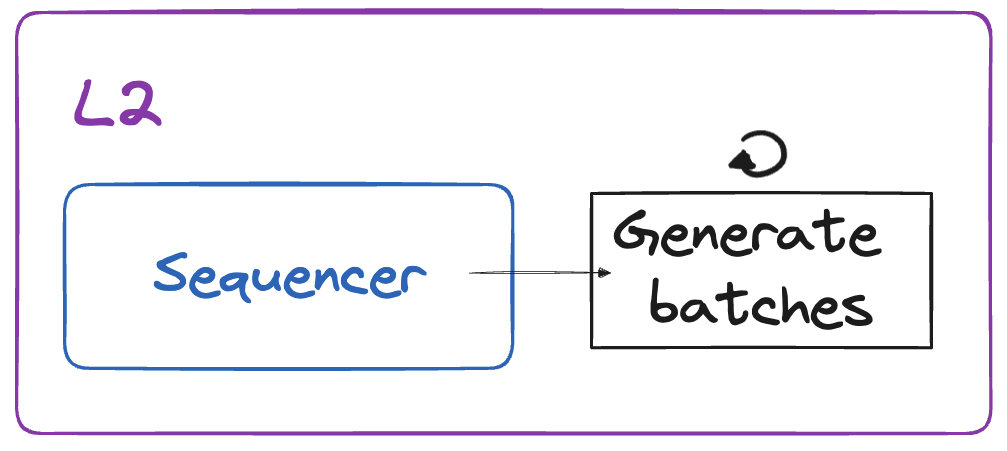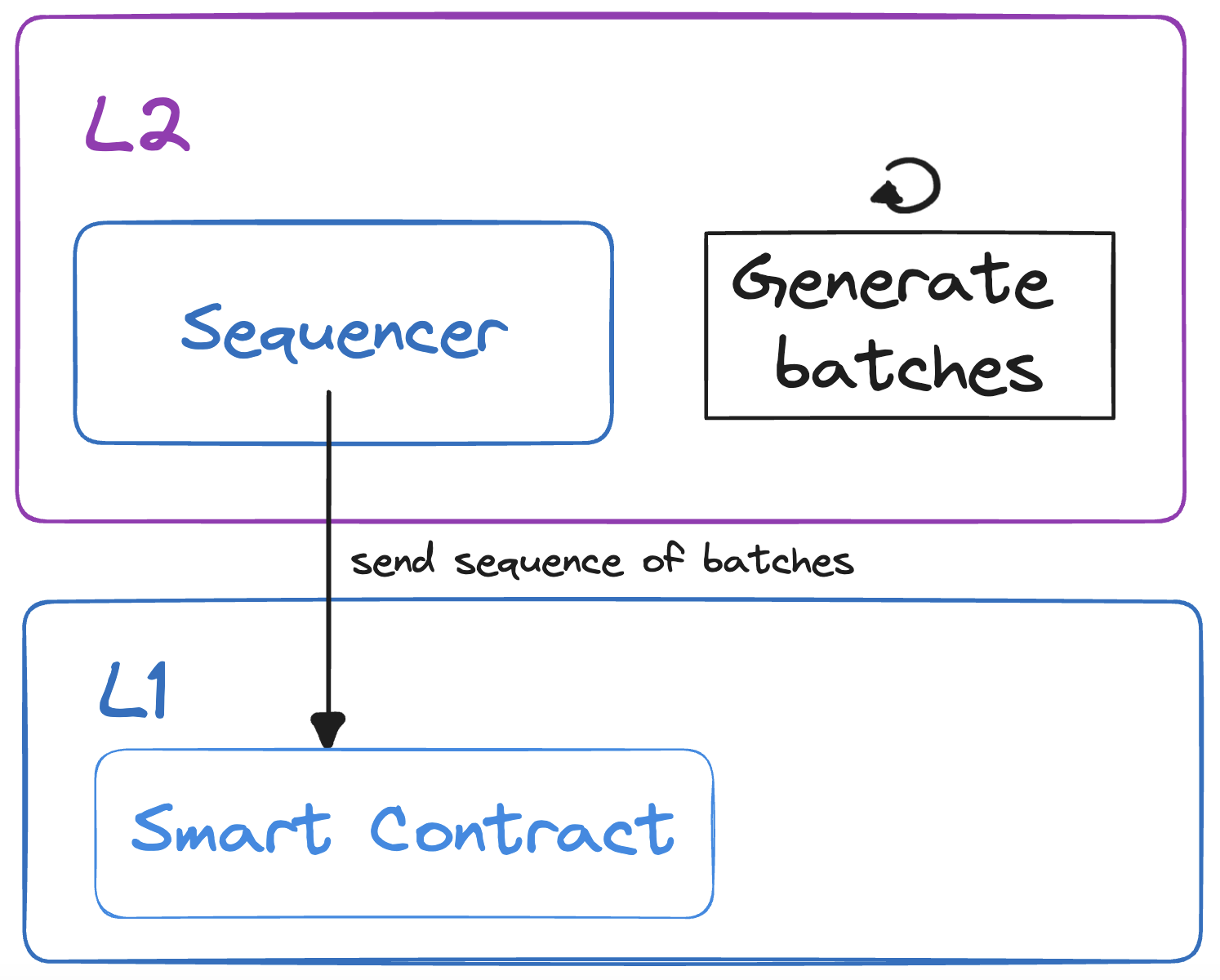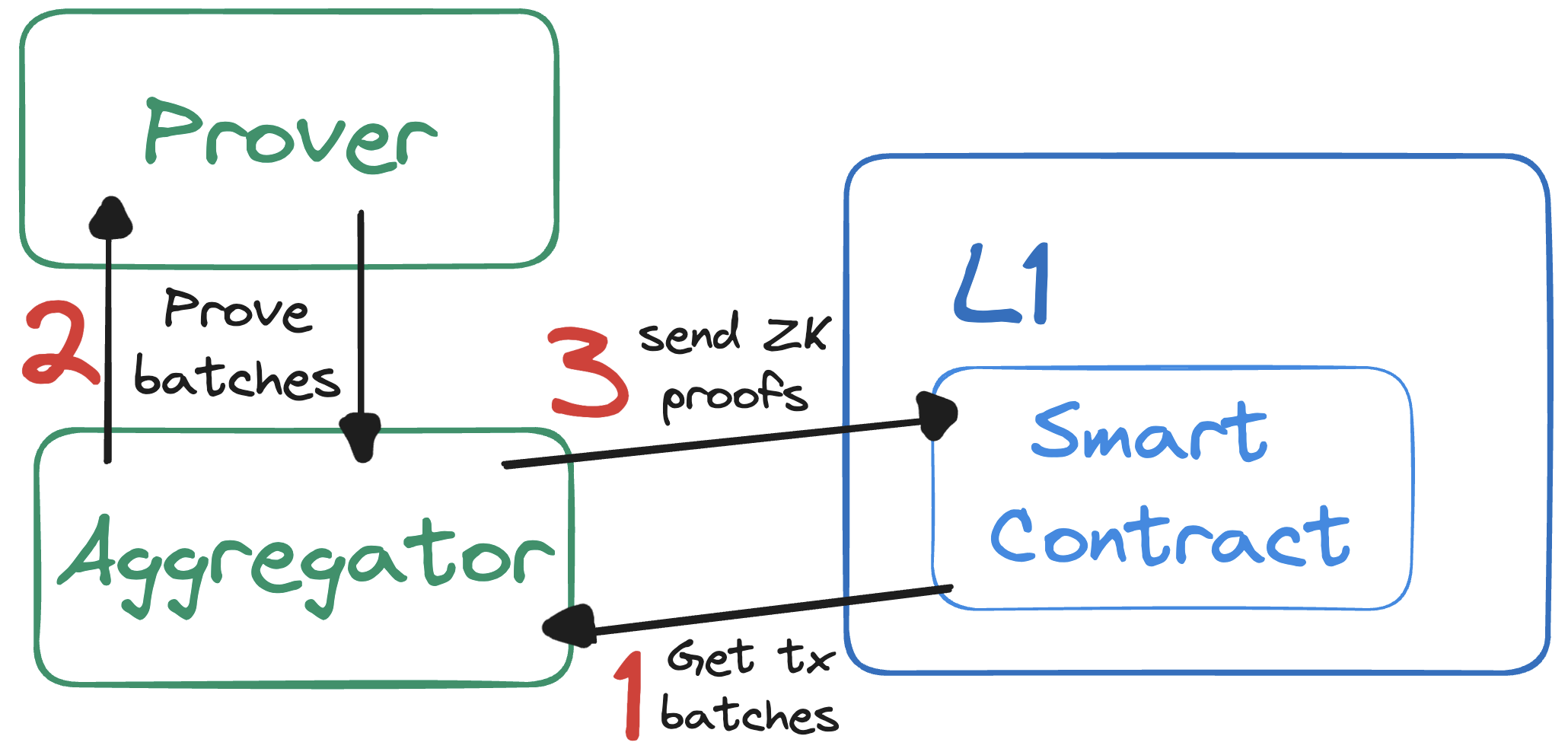Transaction lifecycle¶
Transactions on CDK-built chains go through a series of steps to eventually reach finality on Ethereum. Specifically, they go through the following steps:
- Submitted: The transaction is submitted to the L2.
- Executed: The transaction is executed on the L2 by the sequencer.
- Batched: The transaction is included in a batch of transactions.
- Sequenced: The batch containing the transaction is sent to Ethereum.
- Aggregated: A ZK-proof is generated, posted, and verified on Ethereum to prove the transaction is valid.
Submitted¶
Similar to Ethereum, users submit transactions to a pool of pending transactions on the L2. The transaction is submitted using the same interface as on Ethereum, via JSON-RPC which is implemented by wallets such as MetaMask and developer libraries such as Ethers.js.

Executed¶
The sequencer reads transactions from the pending transaction pool and executes them on the L2. Once executed, transactions are added to blocks, then the blocks fill batches, and the sequencer’s local L2 state is updated.
Once the state is updated, it is also broadcast to all other zkEVM nodes which provide the transaction information back to the user or application that submitted the transaction.
At this point, the transaction appears complete to users, as they are provided with the result of whether the transaction was executed or reverted. Users can continue to interact with the chain with the updated state.

Batched¶
As a background process, the sequencer is constantly creating batches of transactions. These batches contain multiple transactions from multiple blocks on the L2.
One field in the batch data structure is transactions, which contains a bytes representation of the transactions in the batch. This is generated by serializing each transaction in the batch using RLP serialization and then concatenating them together.

Sequenced¶
Depending on the data availability design choices of the L2, if the L2 is a rollup, the sequencer sends arrays of batches to the L1 smart contract, where they are stored inside the state of the smart contract.

Aggregated¶
The final step of the transaction lifecycle is to generate a ZK-proof that proves the batch of transactions is valid. Batches of transactions are read by the aggregator which utilizes a prover to generate a ZK-proof that is posted back to Ethereum.
